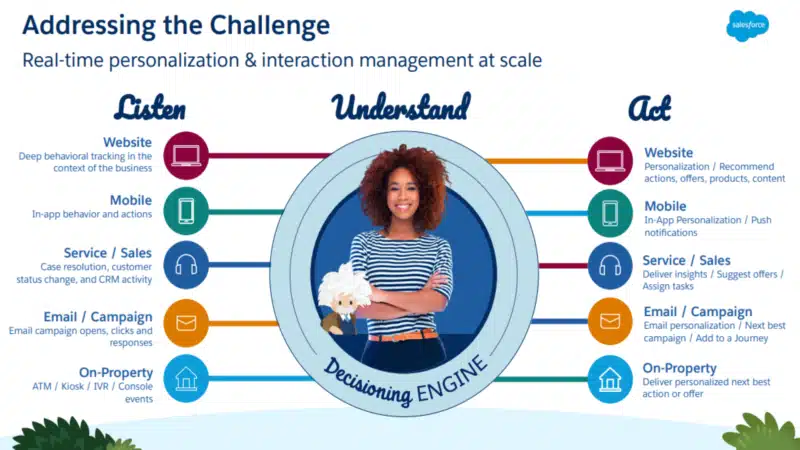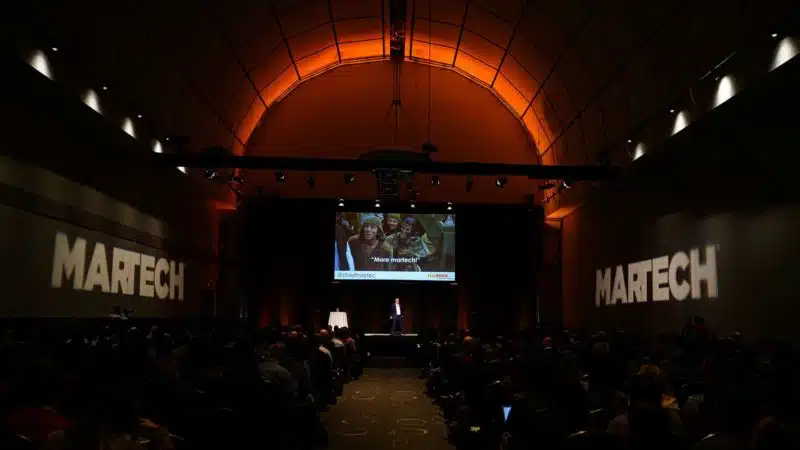How Cinemark personalized the digital customer experience
Cinema chain finds that when critical points in the customer’s journey are personalized, it improves the customer’s speed in converting while also adding value to the experience.
Life changed with the pandemic, and so did a lot of traditional business models and consumer experiences. As one of the Big Three movie theater chains, Cinemark had to reinvent the moviegoer’s journey to ensure safe health practices and meet higher competition from in-home streaming platforms.
To attract more fans to their theaters, Cinemark had to make the experience even more memorable, and also make their interactions with customers relevant and useful. Data made both these goals achievable by helping to increase the level of personalization in Cinemark’s engagement.
Matching in-theater customer experience digitally
“For the moviegoing experience, traditionally, we think of that as stadium seating, a bucket of popcorn and sticky floors, right?” said Ray Valencia, Cinemark’s Director of Digital Customer Experience. “But for consumers, their expectations have increased significantly, and now it’s all about experience. It’s very experiential. They’re looking for big, bright screens, for surround sound and lounge seating and elevated food and drink experiences. So our objective really on the digital side is to elevate that experience to be on par with the in-theater experience.
He added, “Our digital is the front door to the customer experience, and we want it to be inviting and personalized for each of our customer, and also streamlined so it’s very easy for them to purchase with us and makes them want to come back.”
Meeting future customers where they are in the movie business means reaching out beyond the theater to engage customers through digital channels. And doing this in a personalized way is important in getting people’s attention. Valencia said the aim of his team is to make Cinemark the Amazon of movie theaters — digital-first while reducing friction points in the shopping experience.
“Really everyone is unique,” said Leigh Price, Senior Product Marketing Manager for Salesforce, who helped Cinemark personalize. “But how do we treat everyone differently in a digital world where we have thousands or millions of people that we’re all interacting with across many different channels? To pull off this level of personalization, one-to-one personalization, it really requires a new way of thinking.”
Customer speed
When critical points in the customer’s journey are personalized, it improves the customer’s speed in converting on an ad while also adding value to the experience for that customer, according to Valencia.
“We want to provide customers with personalized recommendations at every stage of their journey,” he said. “We want to leverage all that we know about the customer and make the experience seamless to get the customer to convert faster.”
He added that this can be achieved by surfacing showtimes to a customer’s favorite theater, identifying products that are personalized and relevant to the customer based on what they know about them, or upselling products that are personalized. Being very specific with the data helps get the customer in the mood to buy.

“And on the loyalty side, we have a lot of loyalty members and, like many companies, those are some of our most valuable customers,” said Valencia. “So we really pay close attention to their behaviors, and make sure that we’re running personalization campaigns that are focused on driving customer benefits for them.”
Getting to real-time interaction management
Driving customers to local theaters, or local storefronts in other retail categories, requires personalization that goes beyond bucketing groups of prospects. Sure, segmentation is an important part of digital advertising and some messaging, but it shouldn’t replace real personalization in a marketing strategy.
“In 2021, businesses do need to do better, and marketing needs…one-to-one messaging, one-to-one interactions, even when you have millions of customers and prospects and not only does it need to be one-to-one, but it also needs to be in real-time,” said Price.

“This is where a personalization engine comes in to manage interactions in real-time at scale and at a high level,” he added.
Marketers need to be listening to customers across all channels, including your website, your mobile app and even offline through ATM kiosks and customer service teams. And timing is everything, so marketers need to act immediately on this data.
“So even if you’re gaining insights on preferences from your customers on the website and from their browsing, when they actually contact your sales team, you can still use that exact same insight to recommend the next best action to them,” Price explained. “So wherever the interaction takes place, we want that personalization to be consistent. And that’s where real-time interaction management comes into play.”
Related stories